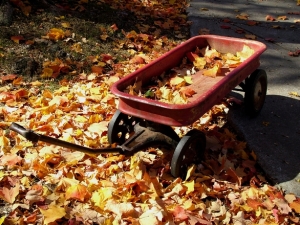Five ways homeowners can save energy this fall

Winterize your homes: Fall is the perfect time to prep your home for the cold weather ahead (Photo by Ned Horton/Free Images).
Household heating bills this winter are estimated to be lower than in the last two seasons, according to the U.S. Energy Information Administration.
This forecast is good news to homeowners with heating costs accounting for more than 40 percent of utility bills.
Still, with the fall season underway now is the best time to get your homes in shape for the colder months ahead. By making simple adjustments, you can spend less money on energy and add more to your savings.
This week, we’ve compiled a list of ways you can make your homes more comfortable this season:
- Keep warm air in and cold air out. Window frames, ceilings, lighting and plumbing fixtures are some of the most common sources of air leaks in your homes. To prevent heat from escaping, take some time to caulk and weatherstrip openings to the outside.
- Set your programmable thermostat at 68 degrees Fahrenheit and down by 10 degrees at night or when you’re not home. The U.S. Department of Energy reports that turning your thermostat lower by 10 to 15 degrees for eight hours per day will reduce energy usage by 5 to 15 percent annually on your bill. The lower your interior temperature, the slower heat is lost through floors, walls and ceilings.
- Before starting up the furnace, make sure that it’s in tiptop shape. Stock up on air filters, and replace them every one to three months. Also, check for rust and ensure that gas lines are properly fastened.
- In addition to sealing air leaks, make sure that proper insulation is installed in your attics, basements, ceilings and floors. Find out how much insulation your homes need by visiting the DOE Zip Code Insulation Calculator. You can conduct your own DIY home energy audit or hire a certified professional to assess your insulation needs.
- Don’t forget to insulate your water heater. As mentioned in a previous post, be careful not to cover the top, bottom, thermostat or burner compartment of natural gas or oil hot-water storage tanks. Remember to insulate the first 6 feet of hot and cold water pipes connected to the water heater.
We hope you put these energy tips into action. You can also get financing for significant energy efficiency improvements to your home through our Be SMART Home Loan program, which covers insulation in the attic, floors, and walls, and hot water system improvements. Be SMART offers flexible financing of up to $25,000 for eligible homeowners.
For more ways on how to save energy, visit the U.S. Department of Energy‘s Energy Saver blog.
